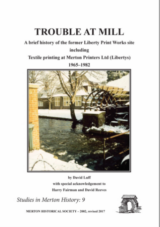Studies in Merton History
This series of A4 booklets is an ideal format for the publication of studies undertaken as part of an academic course, as well as non-academic in-depth studies.
A History of Fry’s Metal Foundries and the Tandem Works
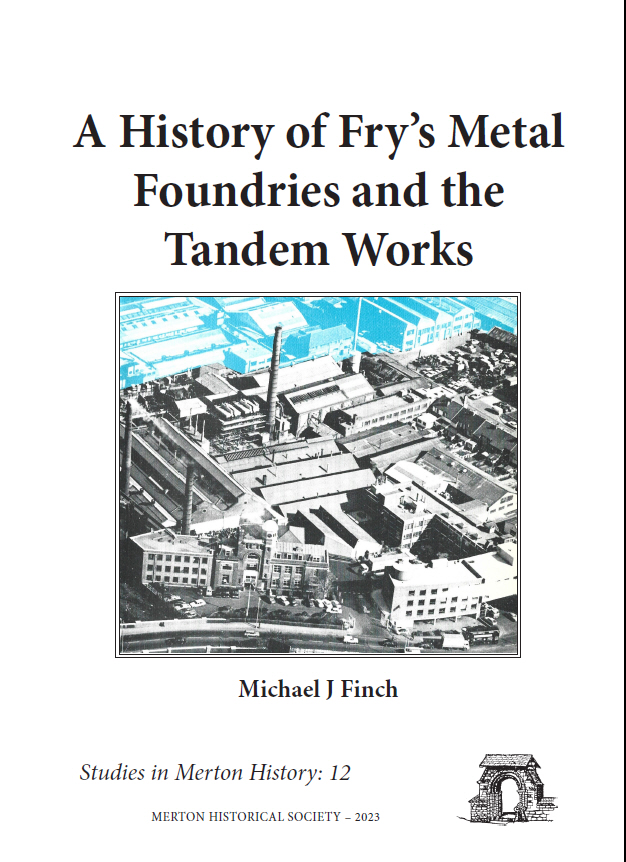 Studies in Merton History 12: by Michael J Finch
Studies in Merton History 12: by Michael J Finch
This account focuses primarily on the foundation of Fry’s, the companies that existed long before Fry’s that shaped Fry’s future, and the people who made it happen through belief, determination and hard work, not to mention the willingness to take chances. It is a fascinating story of success and a rise from nothing that justifies the effort to tell the story, because there is little information otherwise available. The fact that information is scant is the biggest surprise, given the enormous impact Fry’s Metals had on the print metal industry in those early days, the number of people they employed, not just at the Tandem Works, but also at the branch foundries and overseas, and the impact of the company on local communities.
Excavation of a Romano-British site at Short Batsworth, Mitcham 1966-68
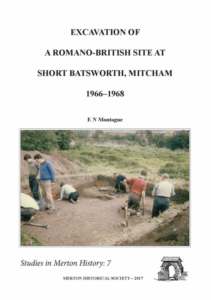
In this study Eric Montague, late Vice-President of MHS, records the history of the site, the dig, the finds and his conclusions. This 32-page A4 booklet has 18 illustrations (maps, plans and photographs) and sells at £2.50 (£2 to members) plus £1.20 postage.
JUSTICE TO MEN AND COUNTRY: The Mitcham Military Tribunal, 1916–1918
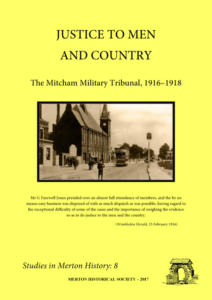 In this study Keith Penny provides information on the ever-changing regulations regarding conscription, and the way these were administered in Mitcham, as reported in the local newspapers of the time.
In this study Keith Penny provides information on the ever-changing regulations regarding conscription, and the way these were administered in Mitcham, as reported in the local newspapers of the time.
Mitcham in the Mid-17th Century:
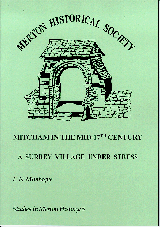
A Surrey Village under Stress
Using primary sources where possible, the author examines the impact of the Civil War on the semi-rural parish which was Mitcham at the time. Topics discussed include recruitment, taxation, parish administration, social structure and even the property market.
Not Trampled But Walked Over
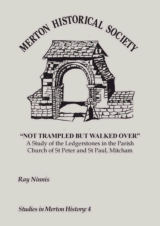
A Study of the Ledgerstones in the Parish Church of St Peter and St Paul, Mitcham
The ledgerstones (inscribed flagstones used to seal graves and vaults) in Mitcham parish church have been concealed under the carpeted floor since 1991. Fortunately Ray had photographed many of them, and had copied the inscriptions, shortly before they were covered, and this book reproduces this material, together with biographical notes. This book is a must for local and family historians.
OUR CONVICT SON: Harold Brewster 1895-1958: A Merton Objector to Conscription
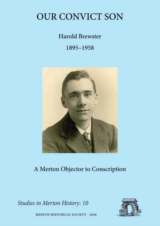 In March and April 1916 Harold Brewster, a surveyor’s assistant employed by Merton and Morden Council, argued his case in front of two tribunals that no earthly court had a right to come between a man and his conscience. His conscientious objection was to the undertaking of all forms of military service. Resisting conscription exposed him to the hostility of the majority of the population and to the penalties, short of death, that military and civil rule could impose.
In March and April 1916 Harold Brewster, a surveyor’s assistant employed by Merton and Morden Council, argued his case in front of two tribunals that no earthly court had a right to come between a man and his conscience. His conscientious objection was to the undertaking of all forms of military service. Resisting conscription exposed him to the hostility of the majority of the population and to the penalties, short of death, that military and civil rule could impose.
In this study, Keith Penny traces the full range of the penalties that young Harold Brewster endured in the name of conscience.
Poor Relief in Morden 1750–1834
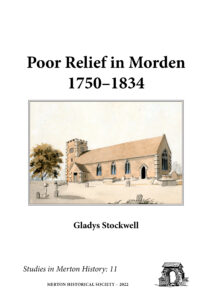 Studies in Merton History 11: by Gladys Stockwell
Studies in Merton History 11: by Gladys Stockwell
A few years ago, Mrs Gladys Bayton offered to the Society her dissertation, undertaken while teacher training in the early 1960s, on the efficiency of the poor relief administration in Morden, using the documents then in the parish chest at St Lawrence Church, Morden.
Recruitment to the Armed Forces in Mitcham 1522-1815

In this study Eric Montague looks at the impact of war and the threat of invasion on Mitcham over a period of 300 years, with particular emphasis on recruitment to the militia. The text is in four chapters, covering the Tudor period, the Stuarts and the Commonwealth, the eighteenth century and, much the longest, the Napoleonic Wars. Eric has used primary sources where they exist, and the booklet includes among its many illustrations reproductions of a variety of documents.
Textile Bleaching and Printing in Mitcham and Merton 1590-1870
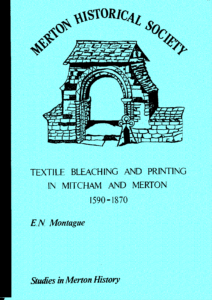
This detailed study traces the history of the four major areas of textile bleaching and printing along the banks of the River Wandle within the ancient parishes of Mitcham and Merton – Willow Lane, Ravensbury, Phipps Bridge and Merton Abbey.
This volume has long been out of print, though copies can be consulted at Merton Heritage & Local Studies Centre.
However, the author has updated the information relating to the three Mitcham sites and has included this in the relevant volumes of Mitcham Histories.
The Archaeology of Mitcham to AD 700
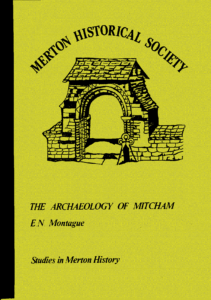
This study brings together what is known of the archaeology of the area from earliest times until the end of the Dark Ages. The Anglo-Saxon cemetery at Mitcham is well-known, but the prehistoric and Roman discoveries are also worthy of mention.
This study was published by Merton Library Service on behalf of Merton Historical Society and is now out of print. Copies may be consulted at Merton Heritage & Local Studies Centre on the 2nd floor of Morden Library.
The Now and Hereafter Poor:
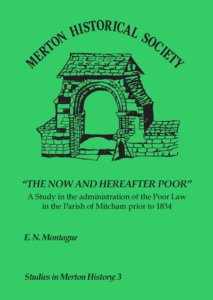
A study in the administration of the Poor Law in Mitcham prior to 1834
Chapters cover – Practice in Mitcham till 1720; The Poor Law in Operation in the Eighteenth Century: (a) Apprenticeship, Settlement and Out-relief, (b) The Workhouse; The Parish Officers and the Poor Rate; Wartime Stresses; Post War Depression and Poor Law Reform
A private Act of Parliament, obtained in 1816 “For the better assessing and collecting the Poor and other Parochial Rates in the Parish of Mitcham, in the County of Surrey” is reproduced in the Appendix.
Trouble at Mill: A brief history of the former Liberty Print Works site, including Textile printing at Merton Printers Ltd (Libertys) 1965-1982
David started work at Merton Printers Ltd in January 1965, and completed the last-ever print-run at the Merton Abbey Works before it closed in December 1982. In this book David traces the early industrial history of the site, and then takes us on a personal tour of the production processes, introducing us to many of the personalities along the way. This unique view ‘from the shop floor’ makes fascinating reading, and the abundance of photographs, diagrams and plans complement the text perfectly.
 MERTON HISTORICAL SOCIETY
MERTON HISTORICAL SOCIETY 